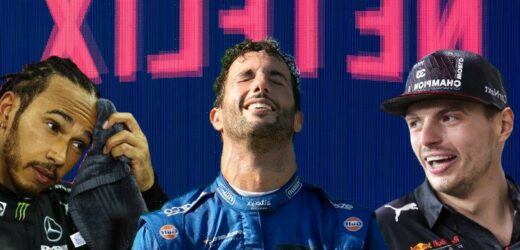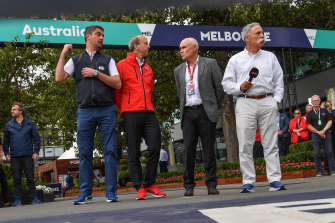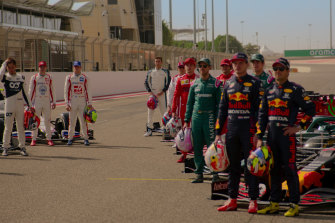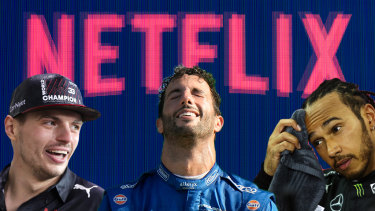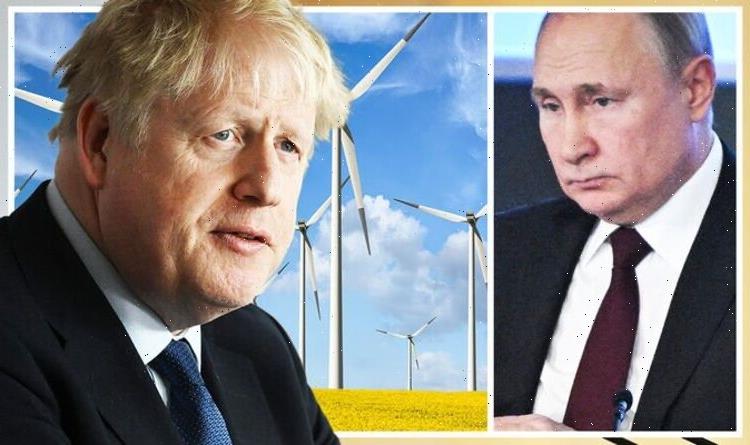Talking points
- Formula 1 returns to Melbourne next month after a 1112-day absence.
- Hotels in and around Melbourne’s CBD are 90 per cent full the night before April 10’s big race.
- Fly-on-the-wall Netflix series Drive to Survive has opened up the world of F1 politics and on-track tactics to new audiences.
The snap cancellation of the 2020 Australian Grand Prix on March 13 of that year, announced through a megaphone to fans who had queued for hours to enter the track, marked the beginning of Victoria’s rollercoaster pandemic journey.
Five days beforehand, 86,000 fans had watched Australia win the women’s T20 cricket World Cup at the MCG. A week after the gates closed at Albert Park, Australia’s border was also closed, not to reopen until 23 months later.
But as Formula 1 returns to the streets of Melbourne next month after a 1112-day absence, daily life feels as close to normal as it has since before the pandemic.
It will be the first major international event to take place with worries about COVID-19 seemingly in the rearview mirror, even though an Omicron sub-variant is posing a new risk and about eight COVID-19 deaths in Victoria a day over the past week should not be forgotten.
And while F1 has, for many, been nothing more than cars going around in circles, a new era of the sport and a Netflix series have spurred unparalleled interest in this year’s event – particularly among women.
“I think Formula 1 this year is going to be of enormous significance,” Tourism, Sport and Major Events Minister Martin Pakula said on Sunday.
Former F1 race director Michael Masi (left), Australian Grand Prix Corporation chief executive Andrew Westacott, corporation chairman Paul Little and former F1 boss Chase Carey at a media conference following cancellation of the 2020 event.Credit:Joe Armao
Hotels in and around Melbourne’s CBD are 90 per cent full the night before the race on Sunday, April 10, while Australian Grand Prix Corporation boss Andrew Westacott believes up to 25,000 people will miss out on race-weekend tickets because there is not enough space to fit them all in.
Weekend tickets for the 12 regular grandstands sold out 18 weeks before this year’s event. The previous record was six weeks in advance. Five new grandstands were then created. Sunday tickets for these new stands sold out in an hour, and weekend tickets are now all gone. Organisers expect about 130,000 people on both Saturday and Sunday, when the main components of the race weekend take place.
“It’s just incessant – the demand is continuing,” Mr Westacott said.
So, what is causing the surge in popularity?
Drivers in the Netflix series.Credit:Netflix
Mr Westacott and Mr Pakula cite the same three reasons: pent-up demand after two years without a race (2021’s event was also cancelled), an extraordinary 2021 season in which fiery Dutch prodigy Max Verstappen controversially pipped Briton Lewis Hamilton to the title in the final lap of the season, and Netflix.
Fly-on-the-wall series Drive to Survive has opened up the previously Byzantine world of Formula 1 politics and on-track tactics to new audiences, and revealed the characters of the charismatic young men behind the wheel.
The “Netflix effect” has been lauded by the sport’s administrators overseas. Sports Illustrated reported American TV viewership was up by 53 per cent last year, Australian figures on Foxtel were up by a third and a Nielsen Sports survey in 10 countries suggested the sport gained 73 million new fans in the year to March last year, three-quarters of whom were aged younger than 35.
Many of these new fans are women, according to Mr Westacott, who says 40 per cent of this year’s tickets have been sold to women compared with 25 per cent in years past.
Max Verstappen (left), Daniel Ricciardo and Lewis Hamilton.Credit:Getty/Matt Davidson
“I’ve had first-hand experience of people I wouldn’t have thought were interested in F1 buying tickets and telling me they’re coming along because of Netflix,” he said. “It’s been a marketing phenomenon.”
In years gone by, a significant proportion of racegoers were middle-aged and older men decked out in racing colours. Recent race weekends have had a more urbane vibe, and this year’s music, food and activity-filled event will cater to what Mr Westacott calls Melbourne’s “culture vultures”.
For the first time since the race came to Melbourne in 1996, the configuration of the circuit has been tweaked in an attempt to create more overtaking opportunities and a more exciting race. Design rules for the cars have been revolutionised too, and it appears the previously dominant Mercedes team has regressed while Ferrari, which Mr Westacott says has strong support in Melbourne, are the team to beat after one race.
Despite the keen interest of many, the event has long angered some who live and play around Albert Park. Thirty amateur sports clubs with 260 teams are based at the Albert Park Reserve and are hauled off the grounds to make way for the race. Matters have worsened this year after the race was shifted from March to April, cutting into the winter sports period.
Hugo Armstrong and junior players have again been moved on from their respective playing fields.Credit:Chris Hopkins
“Spare training grounds are very hard to come by, fixtures distorted, recruiting hampered and fundraising slashed,” Albert Park Sports Club Association president Hugo Armstrong said. Parks Victoria and the City of Port Phillip helped rehome clubs affected by the grand prix.
A 2007 auditor-general’s report found costs to host the event exceeded benefits by $6.7 million.A 2012 report commissioned by anti-F1 group Save Albert Park said the event created a net loss of $60 million.
However, a 2011 Ernst & Young report commissioned by Tourism Victoria found international exposure and tourism spending meant the event netted the state between $32 million and $39 million.
The financial flow-on effects of the race are a boon for Victoria’s whole event sector, according to Gab Robinson, chief executive of Harry the Hirer, which builds the infrastructure for the race and provides equipment.
“It’s one of the biggest projects in the Southern Hemisphere,” Mr Robinson said, adding that the company has had 250 staff working on the event for months. “It’s very important to our business but also the overall event industry.”
“It’s just a phenomenon that it’s come back so strongly … It’s really important to the culture of Victoria.”
The Andrews government invested more than $60 million in the last race that proceeded pre-COVID, in 2019, and topped up the Grand Prix Corporation amid COVID-19 cancellations with $12.5 million last year and $39.7 million in 2020.
The Morning Edition newsletter is our guide to the day’s most important and interesting stories, analysis and insights. Sign up here.
Most Viewed in Politics
From our partners
Source: Read Full Article
